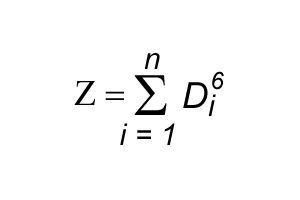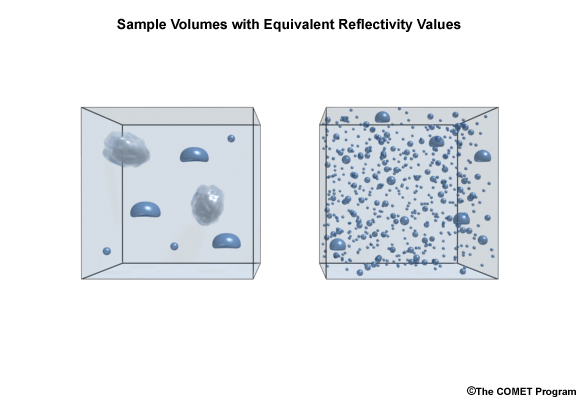Overview of Weather Radars » Reflectivity
NEXRAD WSR-88D radars are designed to detect scattering from specifically-sized targets within approximately 200 km (124 mi) of the radar. The amount of energy received back by the radar (about 1 nanowatt) is typically much, much smaller than the initially transmitted pulse (usually 1 megawatt). The radar receiver amplifies this returned scatter and uses its amplitude to calculate the "radar reflectivity factor" (Z).

The radar reflectivity factor is proportional to the sum of the sixth power of the diameter (D) of all of the scattering targets in the sample volume. Since raindrop size is usually measured in units of millimeters, and volume is usually expressed in units of cubic meters, the radar reflectivity factor has units of mm6/m3.

This sixth power dependence means that large particles dominate the calculated reflectivity value. In this example, we see that just a handful of large raindrops and small hailstones produce the same reflectivity as hundreds of small raindrops.